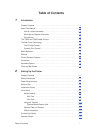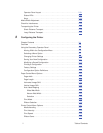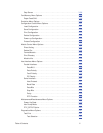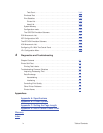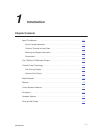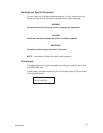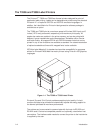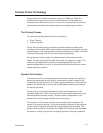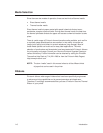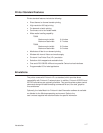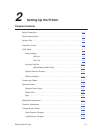
1–5
Introduction
Thermal Printer Technology
Quiet and fast, with excellent resolution output, the T3306 and T3308 are
multifunction printers using an inline thermal printhead. The operation of a
thermal printer is different from that of a line-matrix or laser printer. The thermal
printer uses a printhead with heating elements and special paper or ribbon.
The Printing Process
The thermal printhead allows two modes of operation:
• Direct Thermal
• Thermal Transfer
During
direct
thermal printing, the thermal printhead selectively heats small,
rectangular
thermal dots.
When these contact the coated thermal paper, the dyes
and developers in the coating react to the heat and develop an image. This mode
of printing is generally used for short-term labeling applications.
During thermal
transfer
printing, the heated thermal dots contact a thermal
ribbon. The heat reacts with the ribbon and bonds the image to the paper. This
method is used especially for abrasive, long-storage applications and for
specialized applications, such as in extreme environmental conditions or where
tamper-proofing is required.
Dynamic Print Control
The thermal printer has a unique feature that provides excellent print quality by
preventing unevenness of print density. Unevenness is usually caused by the
stored heat from previous dots. Print quality largely depends on how the thermal
paper or the thermal ribbon and thermal transfer paper responds to the heat of
the thermal printhead.
During printing, the thermal printhead must reach a set temperature in the
shortest possible time. Then it must cool down to the original temperature in the
shortest possible time after printing. Thus print quality is dependent on the
precise control of the energy supplied to the thermal dots.
The Dynamic Print Control is a history control whose output is based on the
results of the previous printing. The printer predicts the quantity of heat required
to print dots and regulates the electrical energy applied to the printhead. This
prevents unevenness of print density and results in the printing of narrow-ladder
bar codes or vertical grid lines that are straight from the microscopic viewpoint.



